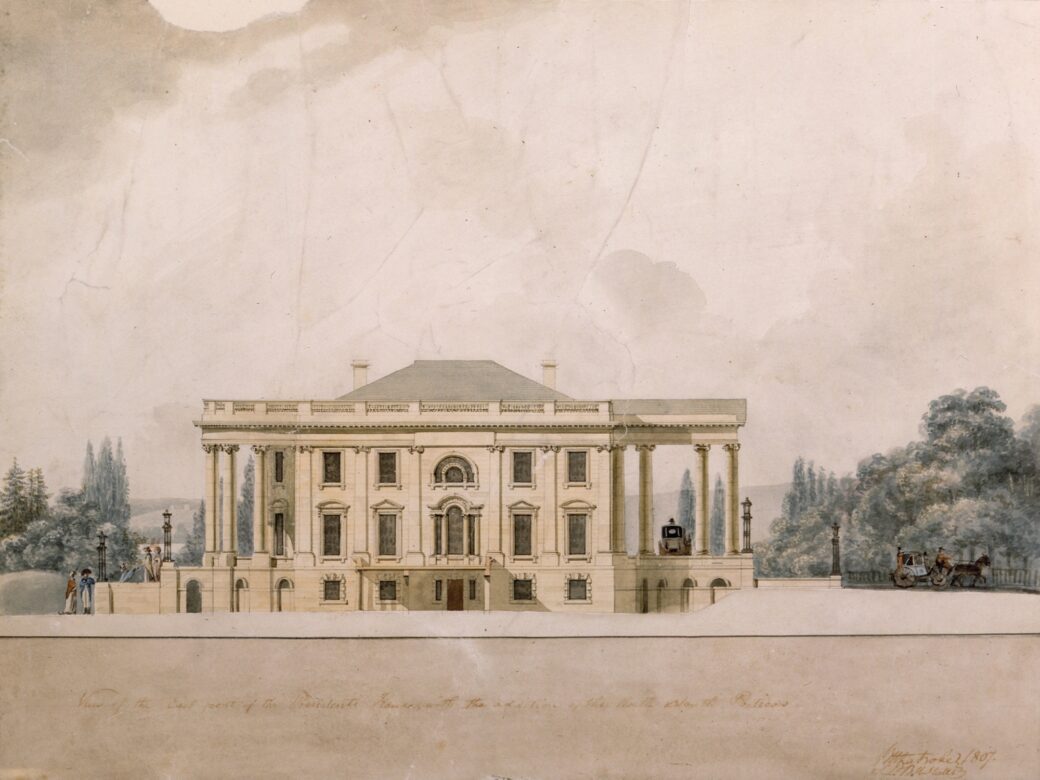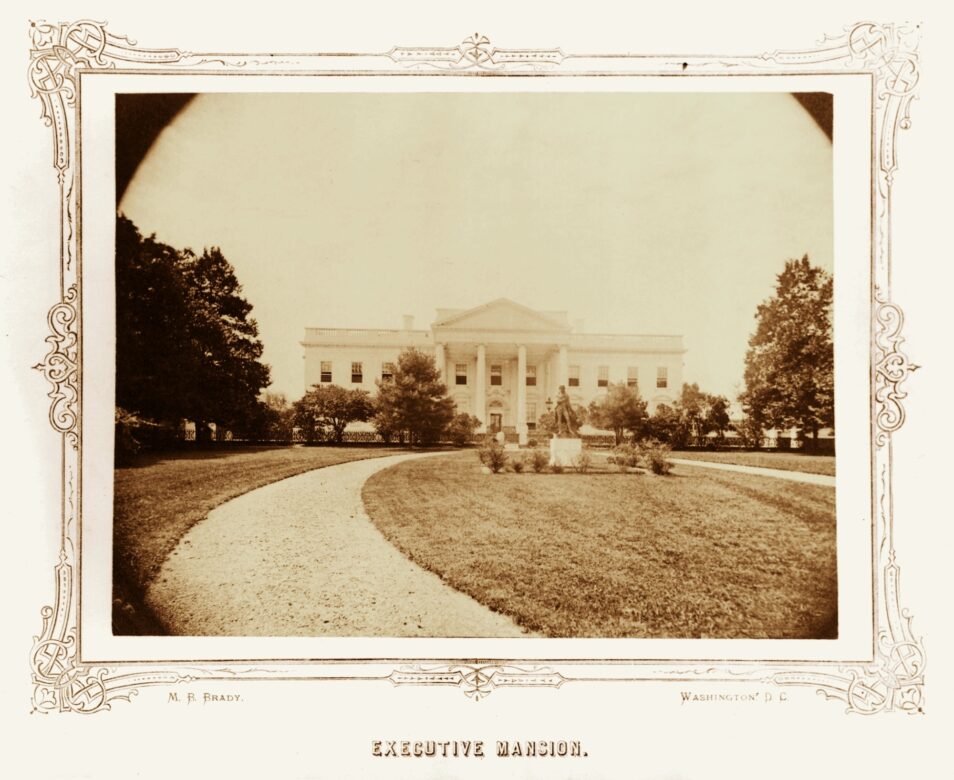Podcast Jacqueline Kennedy: Restoring the White House
When First Lady Jacqueline Kennedy took on the herculean task of restoring the interior of the White House, she appointed...

Main Content
The Presidents House was a major feature of Pierre Charles L'Enfant's 1791 plan for the city of Washington. He envisioned a vast palace for the President, a house five times the size of the house which would be built. It was planned and constructed under the personal supervision of President George Washington.

L'Enfant-Ellicott map of Washington, 1792.
After George Washington dismissed French engineer and architect L'Enfant for insubordination, the design of the White House and Capitol would be determined by separate architectural competitions in 1792. James Hoban, an Irish-born and trained architect then living in Charleston, South Carolina, won the design competition for the White House. Born in Kilkenny, Ireland about 1758, Hoban immigrated to the United States and worked as an architect and builder in Philadelphia and Charleston from 1785 until his move to the nations capital in 1792. He spent the rest of his life in Washington and became a prominent figure in the building trades and served as a member of the City Council from 1802-1831. He died in Washington City in 1831.

James Hoban's White House design.
Hostilities with Great Britain, begun in 1812, culminated in the invasion of Washington on August 24, 1814. British troops entered the defenseless city, where they ate a dinner prepared for the President at the White House, and then torched the building, destroying all but the outer walls. At the urging of President Madison, Congress decided to rebuild the public buildings in Washington rather than move the capital to another city. James Hoban returned to reconstruct the Presidents House as it had been before the fire. The weakened walls were dismantled to the basement level on the east and west sides and on the north except for the central section. Most of the carved ornamentation, bearing the scorch marks of the fire, was re-used. President James Monroe moved into a new house in the autumn of 1817.

Engraving of the White House by William Strickland, after a watercolor by George Munger, 1814.
In 1792, James Hoban had proposed a south porch with doors opening to it from the three south parlors. It was never built. In 1817, Benjamin Latrobe drew proposals for north and south porticoes. These were not constructed until 1824 (the south portico) and 1829 (the north portico) and then under the supervision of James Hoban. Both porticoes (the south is really a porch) are made of Seneca sandstone from Maryland. Only after Andrew Jacksons election in 1828 did Congress appropriate the funds to build the north portico, which covered the driveway to serve as porte cochere. With the finishing of the porticoes the image of the White House as we know it today was complete.

Benjamin Henry Latrobe's drawings for porticoes to the White House, ca. 1817.
From the 1830s until 1902, changes to the main block of the White House occurred principally to its interiors. Andrew Jackson had furnished the East Room for the first time in 1829. Succeeding presidents and their wives periodically refurbished the house to reflect the changing tastes of their time. As the 19th century progressed and presidential families with children and other relatives crowded into a limited space, demands to move the offices increased. The ground floor was a utilitarian basement area of kitchens, storage rooms, furnace, servants living quarters, and workspaces.

The East Room, c. 1861, lithograph.
The statue of Jefferson by French sculptor Pierre Jean David d Angers was set up before the White House in 1848 on orders from President James K. Polk, who saw a parallel between himself and the earlier expansionist. The statue stood in the center of the lawn, which was cut and rolled and seasonally decorated with flower beds. Cut off from the driveway by a fence, this small garden was open to the public every day. This statue of Jefferson was moved to the Capitol building in 1873.

North Front of the White House, c. 1860.
When First Lady Jacqueline Kennedy took on the herculean task of restoring the interior of the White House, she appointed...
Over 200 years ago, James Hoban left Ireland for America to pursue his dream of becoming an architect. Selected by President...
Since 1965, the White House Historical Association has been proud to fund the official portraits of our presidents and first ladies,...
Many people approach the decor of their homes as a reflection of oneself. But what happens when a home's interior...
James Hoban came from humble beginnings as a young carpenter and architect in Ireland, and went on to collaborate with...
During the administration of President Harry S. Truman, the White House underwent a renovation and expansion so extensive, it changed...
A dinner at the White House has always had significance beyond the gastronomical delights. The elegance of the State Dining...
Since the White House was first occupied by President John Adams in 1800, influential people and organizations—or those who hoped to...
Two grand houses were under construction in the young Federal City in 1816: one the President’s House, reconstructed after it wa...
From the beginning of its construction in 1792, until the 1902 renovation that shaped the modern identity and functions of the interior...
The burning of the White House by the British in 1814 during James Madison's presidency represented a low point in our...
President John F. Kennedy and First Lady Jacqueline Kennedy’s advocacy for the arts endures as a vital part of th...